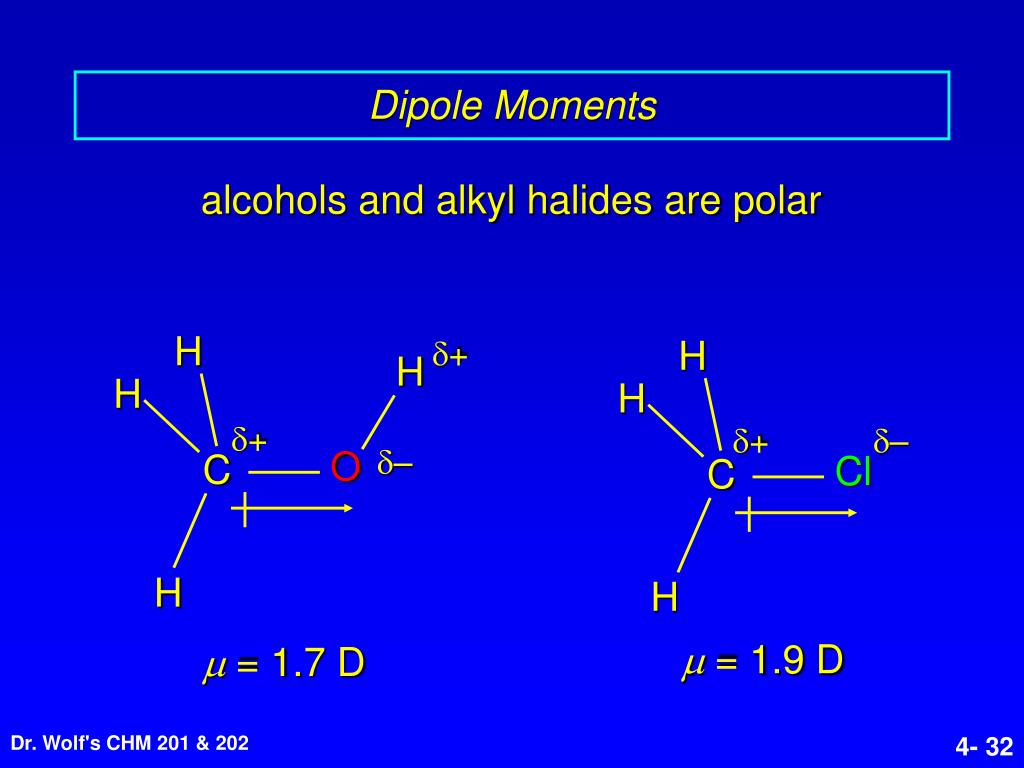

The present theoretical results are in good agreement with the most recent measurements and enable a reliable estimate of the absolute intensity for the 0–1 vibrational transition.

For HBr strongly differing slopes of the dipole moment function have been reported in the literature. The fully a b i n i t i o results of HF and HCl up to v=5 agree within about 5% with the values derived from experiments. True False Dipole moment is a measure of bond polarity which in turn affected by the electronegativity of atoms in the chemical bond. The theoretical potential and dipole moment functions have been used to calculate vibrational dipole matrix elements. The SCEP/CEPA and MC‐SCF dipole moment functions of HF are in good agreement with the experimental function over a range of internuclear distances which covers approximately the nine lowest vibrational states. In general, a molecule will not possess dipole moment if the individual bond dipole moments of the molecule cancel each other out. the molecule has a bent structure with the two OH bonds oriente at an angle of 104.5 degrees. The spectroscopic constants and dipole moment functions calculated from SCEP/CEPA and MC‐SCF wave functions are of comparable accuracy. The dipole moment of water is 1.84 Debye units. For HF various theoretical approaches, i.e., the SCEP/VAR (including variationally all singly and doubly excited configurations), SCEP/CEPA (accounting approximately for unlinked cluster effects), and MC‐SCF (with eight optimized valence configurations and with 66 configurations including atomic correlation) methods are compared. The SCEP/CEPA dipole moments in the vibrational ground states are calculated to be (experimental values in parenthesis) 1.807 D (1.826 D) for HF, 1.120 D (1.1085 D) for HCl and 0.829 D (0.828 D) for HBr. Purely rotational transition energies are obtained with an accuracy of about 0.1 cm −1, and vibrational transition energies agree within 10–20 cm −1 with the experimental values. Potential energy and dipole moment functions of the HF, HCl, and HBr molecules in their electronic ground states have been calculated from highly correlated SCEP/CEPA a b i n i t i o wave functions.


 0 kommentar(er)
0 kommentar(er)
